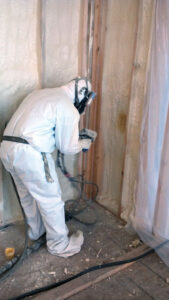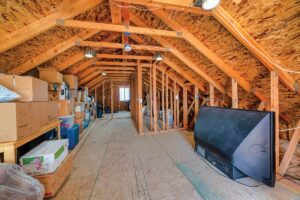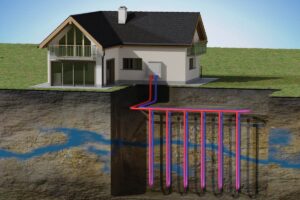
Are you at the point in the building or remodeling process when you need to make a decision as to what insulation system you would like to use in your home? Or, are you going to just leave it up to your builder to use what he thinks is best? I hate to say it, but for most builders the homeowner has no say in the matter. They are going to use what they normally use and the same insulation sub-contractor they’ve always used to keep costs down and the project flowing smoothly.
Let’s just say we actually have a choice to use any insulation we would like. Our choices are: open or closed cell spray foam, fiberglass batts or loose fill, cellulose spray applied or loose fill. We also have some choices to make of what insulation to use in what parts of the home — basement, above grade walls, floors or ceilings.
If you read last month’s Energy Solution’s article you should have a better understanding why I recommend some insulation and not others for specific applications.
For basement walls and rim joist the best choice is closed cell spray foam applied directly to the foundation walls with the framing set out from the masonry wall 3/4″ to 1″. With the foam applied directly to the wall, warm moist air cannot get to the cold foundation wall, so sweating cannot occur. Beware, if you fill the cavities with fiberglass batts to save some money, your basement may develop a damp and musty smell. The warm air finds its way around the fiberglass batts and condenses onto the cold masonry wall then starts growing things behind the wall in the winter and summer time. Not good.
For the above grade walls we can use about anything to insulate the wall cavities. However, some insulation systems are far more forgiving and others require more prep work. In my opinion spray applied cellulose will give you your biggest bang for the buck. It will perform the same as the equivalant R-value of spray foam from a conductive heat flow and air leakage point of view and do it at less than half the cost of foam, and with no off gassing (something else to consider).
If you want to use foam in your walls I prefer to use the open cell or low density foam. Closed cell foam can cause the exterior sheathing to bow and make your finished exterior look wavy. It’s all in the technique of which it’s applied. As a side note, in my travels I have seen some great looking and pretty bad looking foam jobs. Not just anyone can pick up a foam sprayer and do a good job. It takes a lot of practice to be a good spray foam applicator! Foam is great to use in those really hard to air seal and insulate areas like the rim and band joists.
If your project has a tight budget and you are willing to air seal all of the wall cavities air tight, you could install an R15 unfaced high density fiberglass batt in the exterior walls. Make sure there are no voids or compression. No vapor barrier or vapor retarder is needed if the cavities are sealed and

the batts are installed correctly. Using high density batts will assure the insulation will be touching all six sides of the wall cavity as it is supposed to. Most fiberglass batt installers do not seal the wall cavities before installing the batts. A huge mistake!
In the attic before the drywall goes up, install insulation chutes and wind blocks in the eaves to keep wind from washing through the insulation, and seal the blocking with spray foam. A very important step for those of you with homes in the country where the wind blows. Once the drywall is installed, air seal all interior and exterior wall top plates with a flash of spray foam to stop all top plates air leakage. Block and seal all “thermal bypasses” or large openings and penetrations into the attic such as plumbing, electrical, fire stops for flues and chimneys, interior soffits, recessed lights on the attic floor. Once the attic floor has been air sealed, blow cellulose insulation to the recommended R-value for your location. Never use fiberglass insulation in the attic!









